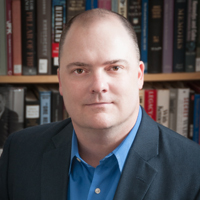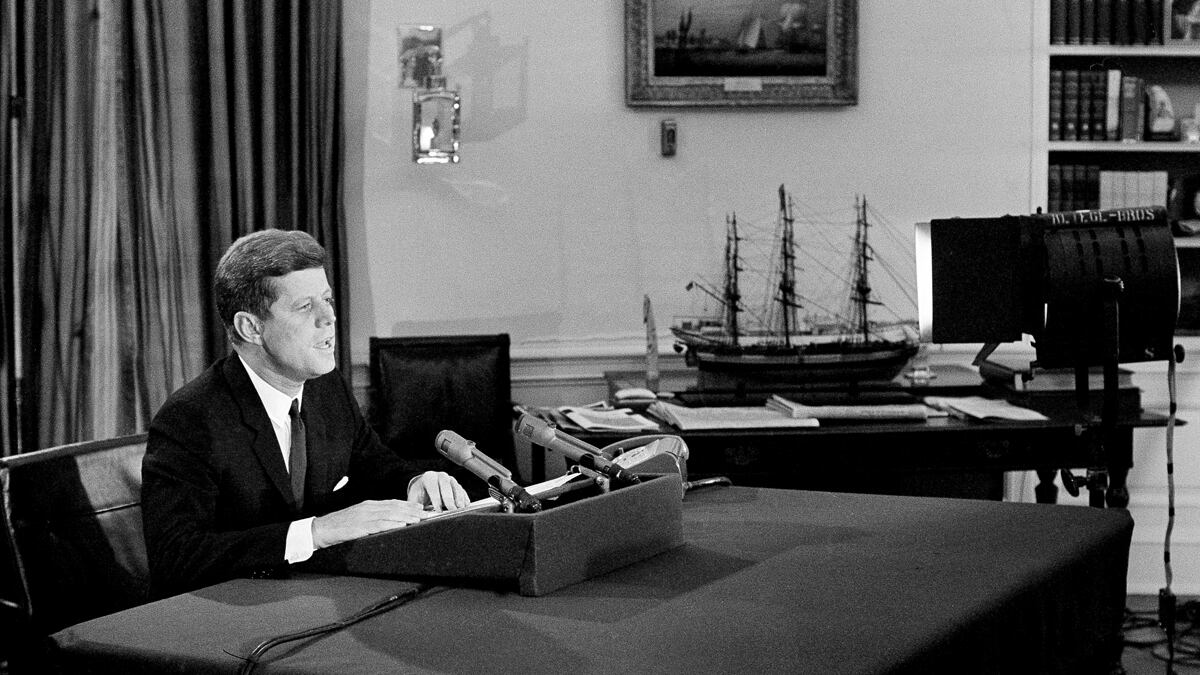As we move into the foreign policy debates, the commander-in-chief test will move to front and center of the discussion.

It’s a frequently cited truism that the hardest decision for any commander-in-chief is sending Americans into harm’s way. No president takes that decision lightly.
But that decision is really an even more fundamental one: what is and is not worth fighting for? That question lies at the very heart of talk of red lines and vital interests, troop levels and air strikes.
ADVERTISEMENT
As any high-school history student can tell you, it was a question John F. Kennedy faced in dramatic fashion in the 13 days of the Cuban missile crisis. But his decision then was less about whether Soviet long-range nuclear missiles in Cuba were worth fighting for—nearly everyone instinctively understood that they were, and Kennedy himself had publicly drawn a red line the previous month—than finding a way to get rid of them before it came to that.
Rather, it was in those first weeks in the aftermath of the crisis that Kennedy faced a series of decisions that were in many ways even more difficult. And those weeks were even more fraught with danger than we knew, as talk of air strikes and blockades and invasions continued out of the public eye. Getting through the 13 days of the Cuban missile crisis without war required cool heads and careful decision-making. And so did getting through the weeks after.
Thanks to Kennedy’s own secret White House recording system—something that was never meant to be made public—we have a remarkably intimate view of how a president makes the decisions about what is and is not worth fighting for.
On the 13th day of the crisis, Khrushchev caved, the world sighed with relief, and school children could take a break from their duck and cover drills.
But the crisis didn’t simply evaporate with one radio broadcast. The missiles were still in Cuba, as were dozens of short-range tactical nuclear weapons, nuclear bombers, and tens of thousands of Soviet troops.
The first order of business was making sure that Khrushchev’s promise to remove the missiles wasn’t part of some trick, that it wasn’t just a way of buying time as Soviet troops rushed to ready the missiles for firing. It just might be “a gigantic hoax of which history has had no parallel,” worried Secretary of State Dean Rusk in a moment secretly captured by Kennedy’s hidden tape recorders.
There had to be verification before there could be trust. And verification meant American eyes in the sky: U-2 reconnaissance planes flying 12 miles high and low-level flights coming in fast and low under 1,000 feet to take photos of the Soviet bases.
But what if another one of those planes was shot down? It was an all-too-real possibility. On the 12th day of the crisis, a Soviet missile had shot down a U-2, killing the pilot. And planes flying the low-level missions were returning to base with holes from Cuban bullets.
In one episode revealed for the first time on these tapes, Kennedy was forced to confront that issue directly. Preliminary reports had come in that another American surveillance plane had been shot down over Cuba. In the anxious minutes waiting for the Pentagon to confirm the report, Kennedy mulled his options. Should they just absorb the loss or retaliate by bombing Cuban airfields? He knew what his military chiefs were likely to push for. And he knew he would face scorching political pressure once word leaked out that another plane was down—it was the day before the 1962 midterm elections. But retaliation could easily spiral into war.
As it happened, Kennedy was handed a reprieve that day. It was a false alarm—Cuban fighters had scrambled but not actually shot down a plane—but in the secret recording of those nervous minutes we get to hear in real-time and in intimate detail a president confronting the decision directly based on the kind of incomplete and sometimes flawed information he’s given.

The decision about what was and was not worth fighting for was one Kennedy faced many other times in the weeks after the 13 days as the focus shifted from the missiles of October to the rest of the formidable arsenal the Soviets had sent.
That included long-range nuclear bombers capable of striking deep into the United States. The Soviets were refusing to remove them—they were not part of the deal, they said. Should he order air strikes on the airfields to take them out?
There were also dozens of short-range nuclear missiles in Cuba. The Americans knew about some of them, although they didn’t know that Moscow’s plan was to hand them over to Fidel Castro, which would have made Cuba the world’s fifth nuclear power overnight. But the threat posed by those missiles had its limits. With a range of about 25 miles, they could “deal bloody hell with Guantanamo,” as Marine Corps Commandant General David Shoup told Kennedy, but they couldn’t reach the United States.
Tens of thousands of Soviet troops were still in Cuba. American intelligence put the number at 17,000 (in reality, there were about 42,000). Khrushchev said he would remove them “in due course,” but did he need some prodding by ratcheting up the blockade?
As Kennedy’s national security adviser, McGeorge Bundy, framed the problem for the president in another moment captured on tape, the question came down to “whether you want to keep the heat on, get the basic Soviet military presence out of Cuba, which means a small war.” Bundy offered his own view: “My five-second reaction is to have the small war but not today.”
Kennedy navigated those weeks by choosing carefully where to apply pressure. He got some of what he wanted, but he was also forced to compromise and accept a level of risk. The Soviets ultimately agreed to remove the nuclear bombers. The Americans decided not to push explicitly for removal of the short-range missiles. And Khrushchev would be taken at his word that he was going to remove the troops (some actually stayed, sparking the Cuban brigade crisis a decade and a half later).
In the vice presidential debate, Paul Ryan claimed the mantle of John F. Kennedy’s tax plan. But Kennedy’s more enduring legacy is how he faced the commander-in-chief test.






